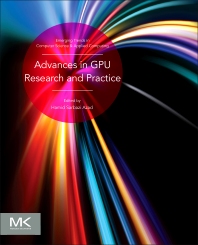Books in Control structures and microprogramming
Books in Control structures and microprogramming

Energy-Efficient Devices and Circuits for Neuromorphic Computing
- 1st Edition
- Farooq Ahmad Khanday
- English

Modern Assembly Language Programming with the ARM Processor
- 2nd Edition
- Larry D Pyeatt
- English

Embedded Systems
- 2nd Edition
- Jason D. Bakos
- English

Advances in GPU Research and Practice
- 1st Edition
- Hamid Sarbazi-Azad
- English

Modern Assembly Language Programming with the ARM Processor
- 1st Edition
- Larry D Pyeatt
- English

System on Chip Interfaces for Low Power Design
- 1st Edition
- Sanjeeb Mishra + 2 more
- English

Design Recipes for FPGAs
- 2nd Edition
- Peter Wilson
- English

Embedded Systems
- 1st Edition
- Jason D. Bakos
- English

Programmable Logic Controllers
- 6th Edition
- William Bolton
- English

Embedded C Programming
- 1st Edition
- Mark Siegesmund
- English